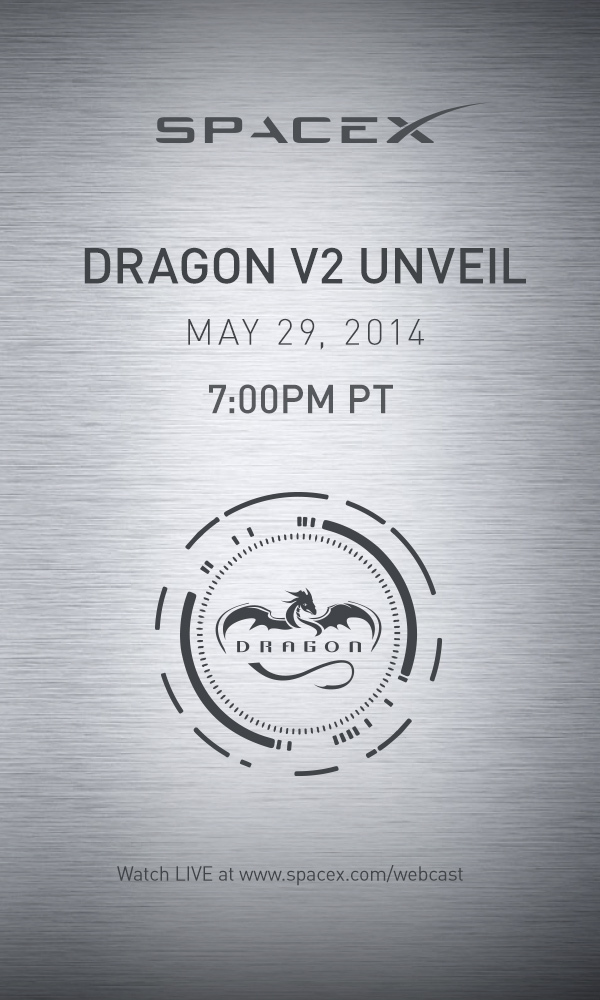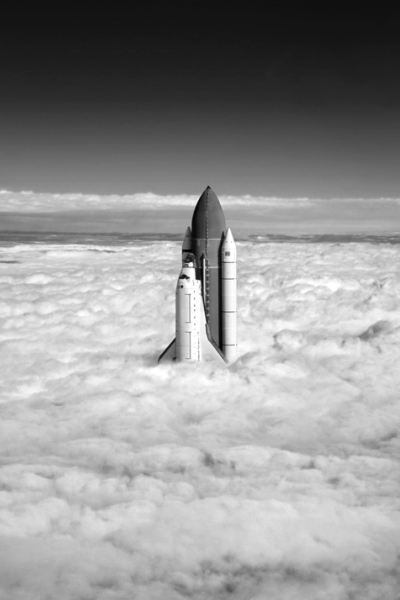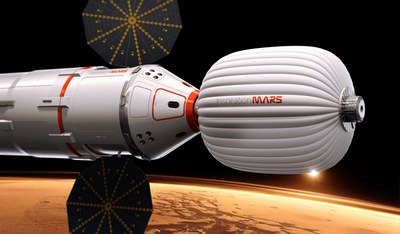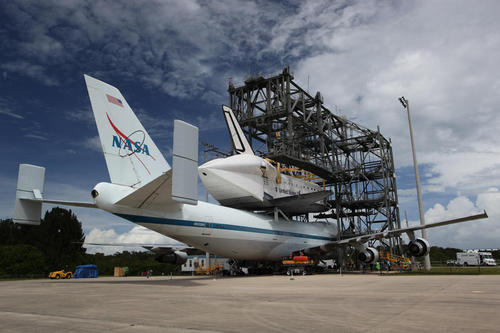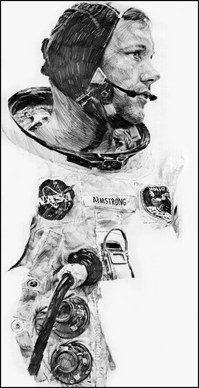I thought I’d round up a few of the things I’ve been seeing about the late Neil Armstrong that have struck me as interesting or poignant.
First, I liked the sentiments expressed in the statement issued by his family:
While we mourn the loss of a very good man, we also celebrate his remarkable life and hope that it serves as an example to young people around the world to work hard to make their dreams come true, to be willing to explore and push the limits, and to selflessly serve a cause greater than themselves.
For those who may ask what they can do to honor Neil, we have a simple request. Honor his example of service, accomplishment and modesty, and the next time you walk outside on a clear night and see the moon smiling down at you, think of Neil Armstrong and give him a wink.
The last thought was immediately and predictably picked up by the cool kids with their Twitterings and turned into a trending hashtag: #WinkAtTheMoon. As these things ought, I suppose.
Next up, Armstrong’s fellow moonwalker, Buzz Aldrin, who sounds to me like he’s genuinely hurting right now:
I had truly hoped that on July 20th, 2019, Neil, Mike [Collins] and I would be standing together to commemorate the 50th Anniversary of our moon landing, as we also anticipated the continued expansion of humanity into space, that our small mission helped make possible. Regrettably, this is not to be. Neil will most certainly be there with us in spirit.
On behalf of the Aldrin family, we extend our deepest condolences to Carol and the entire Armstrong family. I will miss my friend Neil as I know our fellow citizens and people around world will miss this foremost aviation and space pioneer.
May he Rest in Peace, and may his vision for our human destiny in space be his legacy.
I can’t imagine what it would be like to have shared an experience like what Armstrong and Aldrin shared — being the first two human beings to walk on the moon — and then decades later to wake up one morning and have to face life without the other one. I don’t know if Buzz and Neil ever got together for barbecues, or even really spoke at all, but surely they must have had some kind of bond that’s now broken. How lost must Aldrin be feeling right now.
Actor, writer, Star Trek alum and Internet sensation Wil Wheaton said this:
I met Neil Armstrong once, at a dinner to honor Jimmy Doohan in the early 2000s.
He was not much taller than me, but he was a giant of a man. He was as kind as he was intimidating.
Phil Plait, the Bad Astronomer:
We have had our missteps since that one small step, and we can argue about the directions we are or should be taking. But given what we’ve done, and what we are capable of, I have the spark of hope that the future will look back at July 1969 and recognize it for what it was: the dawn of a new era. The end of homo sapiens terrestrialis and the birth of homo sapiens cosmos.
Neil Armstrong was the human who literally stood at that dividing line.
And I wonder… will there someday be a holiday in his honor? In my mind’s eye I can see people lining the streets, watching parades, talking about that day, smiling and laughing… and all the while, through a quartz window in the dome, the crescent Earth will be hanging in the black sky above them.
I really like that image, and the idea of a holiday in Armstrong’s honor. As I recall, I proposed something similar a few years ago.
The novelist Armistead Maupin, best known for the delightful Tales of the City series, posted a heartwarming anecdote on his Facebook page:
I met this nice man around a campfire last year in Santa Fe. As the moon rose in the sky, he talked, with extraordinary modesty, about landing on it. Later, when I introduced Chris to him as my husband, he smiled as if this were the most ordinary thing in the world. It occurred to me that there’s been more than one ‘giant leap for mankind’ since 1969.
Maupin is gay, if you didn’t know.
Speaking of Facebook, for all its annoying tics and general superficiality, it can provide opportunities for interesting encounters that we might not otherwise have. Here’s an exchange I had Saturday night with the lovely B-movie actress (and recent cancer survivor) Jewel Shepard:
Jewel: A moon walker has died. I met him once when I was in the 6th grade. He looked so ordinary, I thought to myself, this couldn’t have been a man who actually walked! on the moon. Later in life, I have come to realize there are many “ordinary” folks who have done extraordinary things. He was just one of my childhood I will never forget.
Me: Great thoughts, Jewel. I envy you for having the opportunity to meet him. I wish I had…
Jewel: @Jason yes, I was lucky — but what I learned most from that day and those that followed is this: There are a lot of folks who have achieved exactly what they wanted by following through on a dream. It’s when one doesn’t see past their current station in life is where the dream dies. If one has the desire and applies themselves in little ways towards that goal… a form of that goal does come true. That is what I took away from that day. I was in a foster home. I was alone… and yet, I thought I could just “make it” in movies. Okay, maybe not at the level I had dreamt — but I did and am doing stuff. What Mr. Armstrong allowed me to see for that moment in my life was a person can do something that is both magical and meaningful if one puts heart and thought and never takes their eye off the goal. Direction is what he taught me that day. After all the questions asked like, “Can you breathe on the moon” were answered, I was left with excitement in all things were possible no matter how improbable.
I can’t claim that Jewel Shepard and I are anything resembling actual friends, but we’ve talked in this fashion a couple of times. I like her. She’s a feisty, funny, smart, tough lady. And what she was saying about inspiration and dreams struck a chord for me, as that’s something that’s been on my mind lately. But that’s another blog entry.
Two more items… one is a real treat, a complete, hour-long interview Armstrong granted within the past couple of years (I’m not sure of the exact date, but it looks pretty recent) to an Australian trade group for CPAs, of all things. I haven’t had time to watch the complete thing yet, but in the first two segments, at least, Neil comes across as relaxed, friendly, self-confident but also self-effacing, and full of great stories. In short, a confirmation of everything everyone who ever met him has been saying about him the past couple days. If he had any reticence about being interviewed, it’s not on display here.
And finally, John Scalzi, as he so often does, wrote a blog entry I wish I could claim as my own, comparing the future we used to imagine would flow from Armstrong and Aldrin’s feat to the future we in fact ended up with:
We can still go back to the moon, of course. We can still go and build and stay and use the moon as our first stepping stone to other worlds. Anything is possible. But for me Armstrong’s death forever closes the door on a certain possible path the we could have taken, the one where that first small step and giant leap was not essentially taken in isolation, but was followed by another step and another leap, followed by another, and so on, one right after another, without pause and without interruption. Even when or if we return to the moon, we will never live in Neil Armstrong’s future.
I wonder how Armstrong himself felt about that. He lived down the road a piece from me; people I know had the honor of meeting him and described him, in so many words, as one of the best of men. Back here on Earth he did not seem to go out of his way to call attention to himself, and while he encouraged people to keep alive the spirit of exploration and service that he exemplified, it doesn’t seem that he spent a lot of time beating a drum in public. For all that, I read that when he was 80, he volunteered to be the commander of a mission to Mars, should anyone want him for the job. I would guess he wanted to live in Neil Armstrong’s future, too. I’m sorry for him he didn’t get to.
Amen, John.

